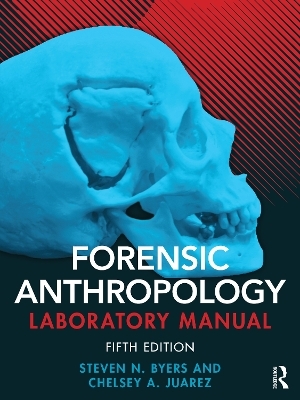
Forensic Anthropology Laboratory Manual
Routledge (Verlag)
978-1-032-63034-2 (ISBN)
This manual provides students in academic laboratory courses with hands-on experience in the major processes of forensic anthropology. Designed to accompany the textbook Introduction to Forensic Anthropology, sixth edition, the manual introduces core procedures and protocol, with exercise worksheets to reinforce the methodologies of forensic anthropology and enhance student comprehension. For the fifth edition, the manual has been updated in line with the textbook, incorporating new methods, figures, and worksheets. Each chapter contains explanations of the terminology, osteological features, and measurements needed to understand each of the topics. New for this edition, in many chapters students will find the incorporation of QR codes to give them immediate access to relevant video or website content to assist with the task at hand. In addition, in an attempt to create an inclusive learning environment, the authors have included online resources for most chapters that can be used in place of skeletons or other classroom resources so that all students can utilize the lab manual regardless of their classroom setup. Chapters may be covered in one session or multiple sessions and include lists of both basic and optional lab materials, enabling instructors to tailor each lab to the resources they have available.
Steven N. Byers has a PhD in Anthropology from the University of New Mexico (UNM), USA. Now retired, he worked for a number of years on various campuses of UNM, teaching courses in forensic anthropology, biological anthropology, and archaeology. He is currently serving on the Anthropology Consensus Body of the American Academy of Forensic Sciences Standards Board, in addition to focusing on Southeastern United States bioarchaeology. Byers’ publications with Taylor & Francis include Introduction to Forensic Anthropology (in its sixth edition). Chelsey A. Juarez is an Associate Professor of Anthropology and the Director of the Fresno State Forensic Anthropology Laboratory at California State University, Fresno, USA. She is also the Director of the Central California Missing and Unidentified Deceased Persons Cold Case Initiative, a 19-county initiative to identify the deceased unidentified in rural Central California. Her research interests focus on isotopic investigations of provenance and diet, with a special focus on the Latino Diaspora and the US–Mexico border through time. In addition, she has researched and written about child abuse, intimate partner violence, and case accuracy trends in forensic anthropology. She is a first-generation Mexican-American. She holds a doctorate from the University of California Santa Cruz in Biological Anthropology, with a specialization in forensic anthropology and the Latino Diaspora.
1. Introduction, 2. Bones, Teeth, Measurements and Methods, 3. Establishing Medicolegal Significance, 4. Recovery Scene Methods, 5. Estimating Postmortem Interval, 6. Initial Treatment and Examination, 7. Attribution of Population Affinity, 8. Attribution of Sex, 9. Estimation of Age at Death, 10. Calculation of Stature, 11. Death, Trauma, and the Skeleton, 12. Projectile Trauma, 13. Blunt Trauma, 14. Sharp and Miscellaneous Trauma, 15. Antemortem Skeletal Conditions, 16. Postmortem Changes to Bone, 17. Additional Aspects of Individualization, 18. Obtaining an Identification, 19. Conclusion
| Erscheint lt. Verlag | 11.11.2024 |
|---|---|
| Zusatzinfo | 131 Tables, black and white; 58 Line drawings, black and white; 74 Halftones, black and white; 132 Illustrations, black and white |
| Verlagsort | London |
| Sprache | englisch |
| Maße | 210 x 280 mm |
| Themenwelt | Geisteswissenschaften ► Archäologie |
| Naturwissenschaften ► Biologie | |
| Recht / Steuern ► Strafrecht ► Kriminologie | |
| Sozialwissenschaften ► Ethnologie | |
| Sozialwissenschaften ► Soziologie | |
| ISBN-10 | 1-032-63034-5 / 1032630345 |
| ISBN-13 | 978-1-032-63034-2 / 9781032630342 |
| Zustand | Neuware |
| Informationen gemäß Produktsicherheitsverordnung (GPSR) | |
| Haben Sie eine Frage zum Produkt? |
aus dem Bereich


